Section 3.c. "Smaller-Scale Rewilding: A Practical Guide to Restoring Nature in Your Own Space"
The latest section of LettsSafari's guide to smaller-scale rewilding: 'Creating Microhabitats for Rewilding: Woodland and Tree Canopy Areas.'
We’re publishing weekly instalments of the definitive guide to smaller-scale rewilding directly in LettsSafari+ and to your inbox - section after section, week after week. Packed with amazing photography and immersive videos straight from our parks.
If you're not a paid member of LettsSafari, subscribe today. Get the amazing guide and help us build more rewilding safari parks for the price of a cup of coffee a month.
Creating Microhabitats for Rewilding: Woodland and Tree Canopy Areas
Even on a small site, incorporating a woodland element is crucial. Trees - whether a tiny grove or a single mature oak - bring enormous ecological value. They provide vertical structure (canopy, understory, ground layer), perennial cover, and resources like nuts, acorns, and leaf litter that many organisms need.
In smaller-scale rewilding, “woodland” might mean a group of just 3-10 trees, or a perimeter of trees around a field or lawn, or a young developing wood that will eventually be a closed canopy. LettsSafari suggests aiming for around 20-25% tree cover in a balanced rewilding park design - enough to create copses and groves, but not so much that everything becomes deep shade, thereby preserving open habitats too. Of course, the exact percentage can vary with context and goals.
Which Trees are Best Removing Carbon and Fighting Climate Change
LettsSafari's parks and its famed Exeter Capability Brown gardens host some of the world's most interesting and historically important trees. They include giant, ancient spruces, majestic Capability Brown Cedar's, Redwoods, Monterey Pines, ancient Yew, Firs and the most extraordinary mix of young and old Oak's. There is a kind of hybrid Cork-Oak unique in our parks. Exeter's Capability Brown gardens host one of the UK's rarest, most endangered trees.
To create a woodland microhabitat, there are two main routes: planting or natural regeneration. Planting is faster in terms of initial establishment; you can plant native tree saplings (often as bare-root whips about 60-90 cm tall) in clusters. If you have just a garden, planting one or two fruit trees or native trees like a birch and a hawthorn can already simulate a tiny “woodland” feel as they grow - underplant them with some shade-tolerant native shrubs or groundcover and you’ve got layers.
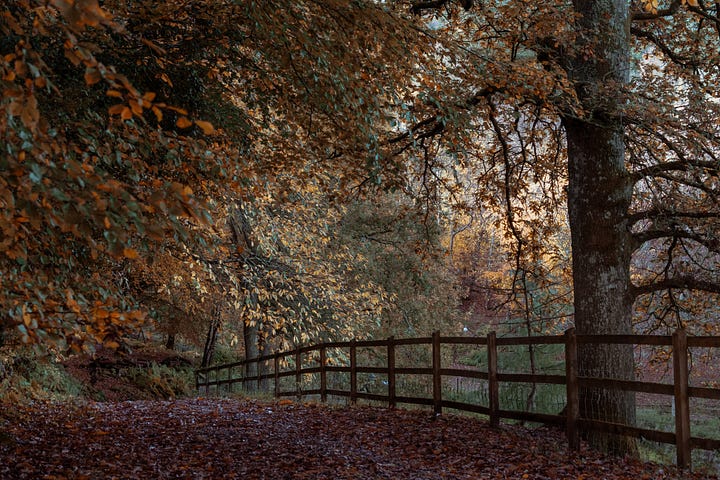
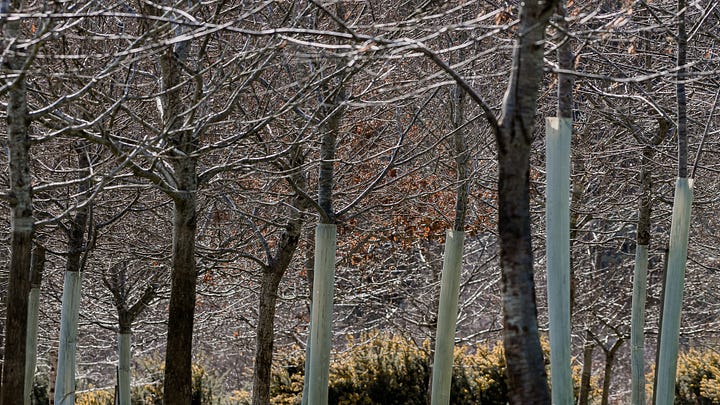

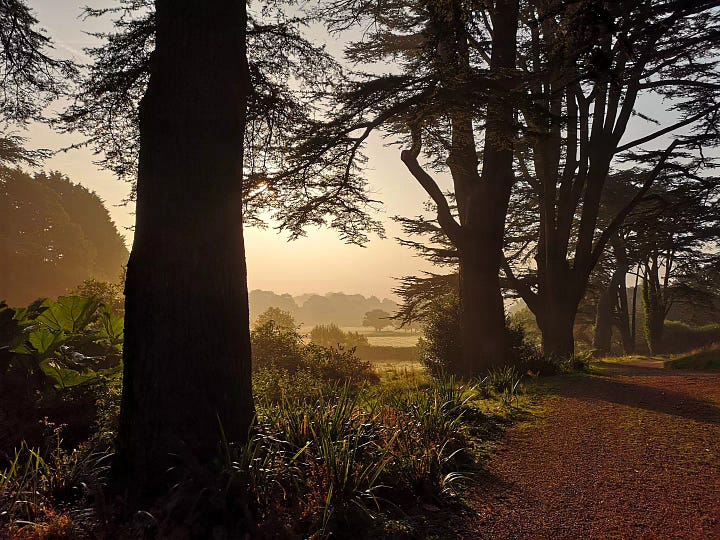
If space permits, consider planting a mini-woodland using dense planting methods (like Miyawaki forests, which plant many seedlings very close together to encourage rapid vertical growth and canopy formation).
Natural regeneration, on the other hand, means you let seeds blow in or be dropped by birds. If there are seed sources nearby (woods or trees in the neighbourhood), you might soon see seedlings popping up - ash, oak, sycamore, hawthorn, etc., depending on your locale. Protect these from mowing and they’ll become your new woods.
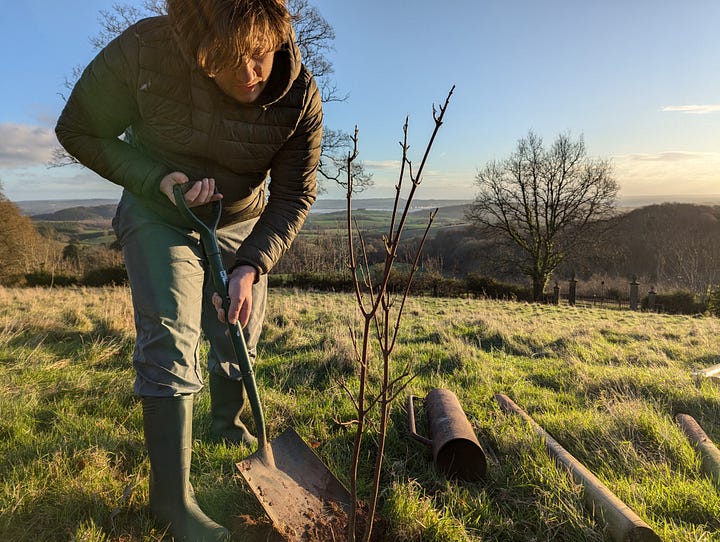
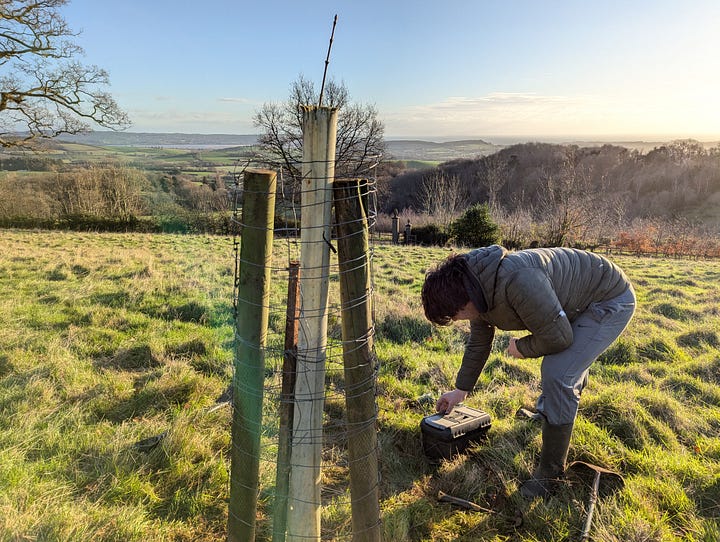
Each approach has merits: planting lets you choose the species and arrangement; regeneration ensures the trees are well-suited and naturally dispersed (and costs nothing). In practice, many small rewilding projects use a mix - planting some desired species (like an oak or fruit tree that might not otherwise appear) and allowing others to self-seed.
Supporting the growth of creeping bramble in controlled areas can naturally nurture and protect seedlings from getting trampled and from greedy rabbits.
The ecological role of even a few trees is profound. Consider the English oak (Quercus robur): it can support over 280 species of insects - more than any other native plant in the UK. Its leaves feed dozens of moth caterpillars (which in turn feed baby birds), its acorns feed jays, squirrels, mice, deer; its bark hosts lichens and its nooks house bats. Having one oak in a small park dramatically increases biodiversity.
Similarly, a willow tree by a pond can be a boon (willow catkins are an early spring lifeline for bees). A single mature ivy-covered hawthorn may hold a robin’s nest and be a winter larder of berries for thrushes.
Thus, keystone trees are a must where possible. If you can’t fit a giant oak, even small trees like crabapple, rowan, or hazel are excellent for wildlife (providing fruits and nuts). And shrubs can be pruned into tree form if needed.
Small woodlands also create microclimates - shade and coolness - which benefit species that can’t handle full sun. For example, many woodland wildflowers (bluebells, wood anemones) and fungi could establish under a tree canopy. The leaf litter layer fosters decomposer insects, centipedes, and ground beetles that keep soil healthy.
In a rewilded garden, leaving the fallen leaves in place (instead of raking them all up) effectively creates a forest floor ecosystem. Those leaves will shelter overwintering butterflies (like brimstones under bramble leaves) and feed earthworms and fungi which release nutrients slowly. One could even inoculate a small wood patch with native woodland wildflower seeds or bulbs to speed up undergrowth diversity.
Management of mini-woodlands is minimal - usually just allowing them to grow. One might thin if trees are too crowded or if you want to favour certain species (for instance, removing a fast-growing sycamore to let an oak spread its crown). If natural regeneration is going, you might control aggressive non-native saplings if they show up (like tree-of-heaven or something undesirable). But often, the woods will sort themselves out.





